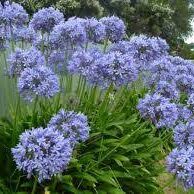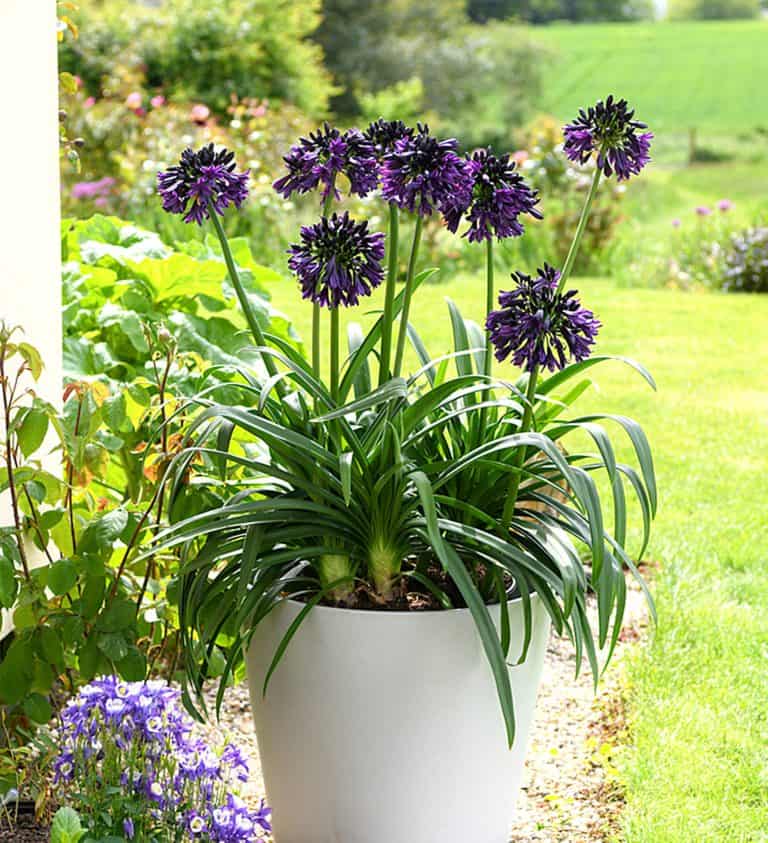Agapanthus Buddy Plant Kingdoms: Perfect Pairings for Your Yard
Agapanthus Buddy Plant Kingdoms: Perfect Pairings for Your Yard
Blog Article
Grasping the Art of Agapanthus Care: Important Steps for Healthy And Balanced Growth and Vivid Blooms
In the realm of gardening, the farming of agapanthus stands as a fulfilling undertaking for those that seek to support these sophisticated flowering plants. With their striking blossoms and graceful vegetation, agapanthus has captured the interest of garden enthusiasts worldwide. Nonetheless, attaining optimum growth and dynamic blossoms calls for a nuanced approach that includes different necessary actions. From picking the best range to understanding pruning strategies, the trip towards growing flourishing agapanthus plants is diverse and holds the essential to unlocking the full capacity of these botanical gems.

Selecting the Right Agapanthus Selection

When selecting the ideal Agapanthus range for your garden, consider elements such as climate suitability, blossom color, and development routine. Agapanthus, generally referred to as Lily of the Nile or African lily, can be found in a selection of colors varying from tones of purple and blue to white. Pick a flower color that complements your existing garden palette to produce a harmonious landscape. In addition, take into consideration the climate in your region to make sure the Agapanthus range you choose can flourish in your certain conditions. Some selections are a lot more tolerant of cold temperatures, while others prefer warmer environments. Understanding the growth behavior of various Agapanthus selections is crucial for proper positioning within your yard. Some varieties have a clumping growth practice, suitable for containers or boundaries, while others have a more spreading nature, appropriate for ground cover or mass growings. By meticulously evaluating these factors, you can choose the excellent Agapanthus selection to enhance the elegance of your yard.
Ideal Growing Conditions
Considering the ideal environmental requirements is necessary for successful Agapanthus farming. Agapanthus plants are sensitive to chilly temperature levels and should be secured from frost throughout winter months.
To guarantee healthy development and lively blossoms, plant Agapanthus bulbs at a deepness of about 2-4 inches and space them 8-12 inches apart. Mulching around the base of the plants helps keep wetness and subdues weed growth.
Watering and Fertilizing Tips
Preserving correct dampness levels and supplying essential nutrients are key components in the treatment regimen for Agapanthus plants. When it comes to sprinkling Agapanthus, it is critical to strike a balance. These plants prefer continually moist soil but are vulnerable to root rot if overwatered.
Fertilizing Agapanthus is essential for advertising healthy and balanced growth and respected blooms. Apply a well balanced plant food, such as a 10-10-10 formula, in the early springtime as new growth emerges. Repeat this application every 6-8 weeks throughout the growing season. Prevent extreme fertilizing, as it can bring about rich foliage at the cost of flowers. Constantly adhere to the producer's guidelines for correct dilution and application methods. By complying with these watering and fertilizing ideas, you can ensure your Agapanthus plants grow and create vivid, resilient blooms.
Pruning Techniques for Agapanthus
Pruning Agapanthus plants at the ideal times and with proper methods is critical for preserving their health and wellness and promoting optimal growth and flowering. The perfect time to prune Agapanthus is in late wintertime or very early spring before new growth arises. Begin by getting rid of any dead or yellowing leaves near the base of the plant. Cut them as close to the ground as feasible without harming the arising shoots.
For flowered stems, wait up until the flowers have actually perished and after that cut them back to the base. This not only cleans the plant's look however read more additionally motivates the development of brand-new blossom buds. Deadheading spent blossoms can likewise redirect the plant's power right into creating even more blossoms as opposed to establishing seeds. Nevertheless, if you wish to accumulate seeds for breeding, leave some blossoms to fully grown and dry on the plant.
Remember to utilize clean, sharp tools to make specific cuts and minimize the risk of introducing diseases. Agapanthus. Regular trimming will certainly help keep your Agapanthus looking healthy and neat while guaranteeing a plentiful display screen of stunning flowers
Managing Typical Pests and Conditions
After guaranteeing correct her explanation pruning techniques for Agapanthus, it is crucial to deal with usual insects and conditions that can impact the health and wellness and vigor of these plants. One common bug that affects Agapanthus is the Agapanthus gall midge.
An additional typical concern is fungal leaf area, which offers as dark sores on the fallen leaves. To avoid fungal conditions, make certain excellent air blood circulation around the plants, prevent pop over here above watering, and get rid of any contaminated fallen leaves without delay. Furthermore, Agapanthus plants can experience from origin rot if they are planted in poorly draining pipes soil. To avoid this, plant Agapanthus in well-draining dirt and stay clear of overwatering. By being vigilant and taking punctual action against pests and conditions, you can aid your Agapanthus plants flourish and produce lively blooms.

Verdict
In verdict, understanding the art of agapanthus care involves picking the ideal variety, offering excellent growing conditions, correct watering and feeding, appropriate trimming techniques, and resolving typical parasites and diseases. By adhering to these vital steps, you can make certain healthy and balanced development and lively blooms for your agapanthus plants. Bear in mind to frequently keep an eye on and keep your plants to promote their general well-being and long life.
To guarantee healthy growth and vivid flowers, plant Agapanthus light bulbs at a depth of about 2-4 inches and area them 8-12 inches apart. By adhering to these watering and feeding pointers, you can guarantee your Agapanthus plants thrive and produce dynamic, durable blooms.
One typical insect that influences Agapanthus is the Agapanthus gall midget. Additionally, Agapanthus plants can suffer from origin rot if they are planted in badly draining pipes soil. By complying with these crucial steps, you can make sure healthy and balanced growth and lively blossoms for your agapanthus plants.
Report this page